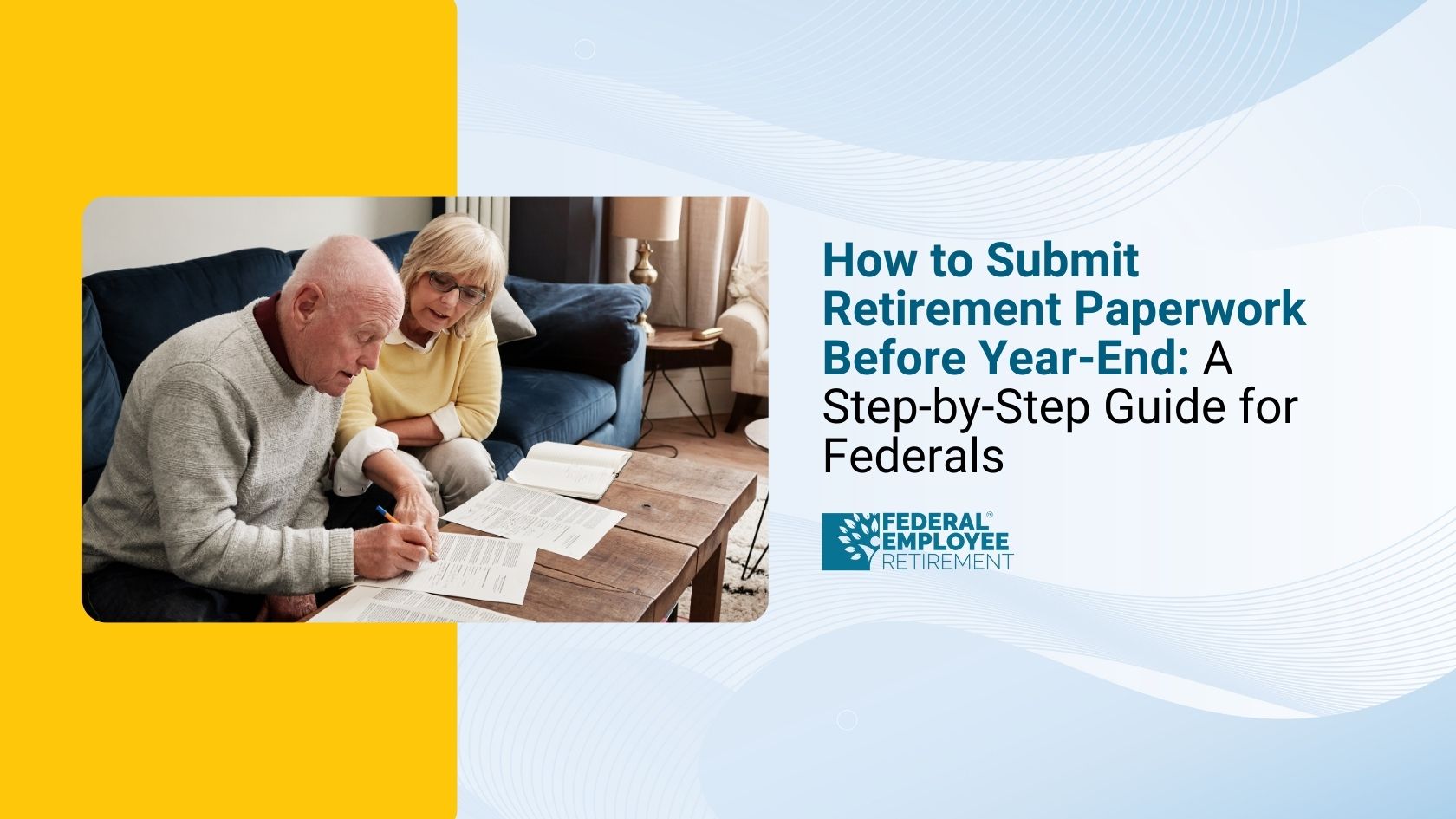You’re not alone; 4,359 federal employees booked their free review.

CSRS Survivor Benefits: Protecting Your Spouse and Planning With Confidence
For most CSRS employees, the survivor benefit election is one of the most important (and misunderstood) retirement decisions. It’s not just about numbers it’s about peace of mind.
We’ve seen many federal employees approach retirement confident about their pension but uncertain about how their spouse will be protected after they’re gone. The CSRS survivor benefit bridges that gap. It ensures your spouse or dependents continue to receive income even after your annuity stops.
Let’s walk through how it works, what choices you have, and what to consider before making your final election.
What Are CSRS Survivor Benefits?
Under the Civil Service Retirement System (CSRS), your survivor benefit provides continuing income to your eligible spouse or children after your death.
In essence:
- Your spouse can receive up to 55% of your unreduced annuity.
- Your annuity is reduced typically about 10% to fund that protection.
- You can choose any percentage between $22 per year and 55% of your full annuity.
- You must make this election at retirement, and it’s usually permanent afterward.
Important: If you do not elect a survivor benefit, your spouse won’t receive annuity payments after your death and will lose eligibility to continue Federal Employee Health Benefits (FEHB) coverage.
Survivor Election Options: Full, Partial, or None
Many CSRS retirees we’ve spoken with choose the full survivor benefit because it gives their spouse the greatest security and keeps FEHB coverage intact. But in some cases especially when a spouse has their own pension or long-term care plan a partial benefit can strike the right balance.
The no-survivor option might seem tempting if you want a larger annuity today, but it can create major gaps in protection later. Always make that decision with both financial and emotional perspectives in mind.
Also read - CSRS vs FERS
How and When to Elect a Survivor Benefit
You’ll make your election during the retirement application process using:
- SF 2801 – Application for Immediate Retirement, and
- SF 2818 – Continuation of Life Insurance Coverage.
A few reminders:
- Your election must be finalized before OPM processes your annuity.
- Once you’re in payment status, changes are rarely permitted.
- If you marry after retirement, you can add a survivor election within two years, though it will permanently reduce your annuity.
We’ve seen retirees caught off guard because they assumed this decision could be changed later it usually can’t. Review your options carefully before you retire.
Related Federal Survivor Benefits
Your CSRS survivor annuity is just one part of your family’s post-retirement safety net. Other programs can complement it:
- FEHB: Only continues for your spouse if you’ve elected a survivor annuity.
- FEGLI (Federal Employees’ Group Life Insurance): Pays a life insurance benefit to your named beneficiaries.
- TSP (Thrift Savings Plan): The entire account passes to your designated beneficiary.
- BEDB (Basic Employee Death Benefit): Applies if you die while still employed, not after retirement.
Tip: Review all your beneficiary designations together it’s common for outdated forms to cause issues later.
Social Security and CSRS Survivor Benefits
Most CSRS employees didn’t pay Social Security taxes, so they generally don’t qualify for Social Security survivor benefits based on their federal service.
However, if you or your spouse earned Social Security credits elsewhere, those benefits may still apply though possibly reduced under the Government Pension Offset (GPO) or Windfall Elimination Provision (WEP).
If you’re a CSRS Offset employee (covered under both systems), your spouse could receive both a CSRS survivor annuity and Social Security survivor benefits.
Eligibility and Special Rules
To qualify for CSRS survivor benefits:
- You must have been married for at least nine months before death.
- Exceptions: death due to accident or while performing official duties.
- Children’s survivor benefits may apply to unmarried dependents under age 18 (or 22 if full-time students).
- Former spouses may be entitled to benefits under a court order.
If your spouse remarries before age 55, they generally lose the survivor annuity but remarriage after 55 doesn’t affect it.
Deciding What’s Right for You
Choosing your survivor benefit is a deeply personal decision. We’ve seen couples debate between maximizing retirement income and ensuring lifelong support for a surviving spouse.
When evaluating your choice, consider:
- Your spouse’s health and life expectancy.
- Whether your spouse relies on FEHB coverage.
- The size of other income sources (TSP, Social Security, savings).
- The emotional comfort of knowing your partner will be financially secure.
Example:
Robert, a CSRS retiree, earns a $70,000 annual annuity.
- With the full survivor election, his annuity drops by roughly $7,000 per year. His wife, Linda, would receive $38,500 annually for life if he passes away.
- If he chooses partial coverage (30%), his annuity reduction is smaller, but Linda’s survivor income falls to $21,000 per year.That trade-off highlights why this decision deserves both financial and emotional discussion.
Key Takeaways
Your spouse can receive up to 55% of your unreduced annuity under CSRS.
Electing a survivor benefit reduces your annuity but keeps FEHB coverage active for your spouse.
Most elections are irrevocable after retirement choose carefully.
Coordinate your CSRS, FEGLI, TSP, and FEHB planning together.
Seek guidance early don’t wait until your final retirement paperwork.
Action Steps for Federal Employees
- Review your annuity estimate with your agency’s HR or benefits officer.
- Discuss options with your spouse to align financial goals.
- Confirm and update all beneficiary designations (FEGLI, TSP, BEDB).
- Submit your CSRS retirement forms accurately (SF 2801 and 2818).
- Store your documentation securely and review every few years.
Pitch / Consultation Invitation (Natural Placement)
If you’re approaching CSRS retirement and want a clearer understanding of your survivor options, our federal benefits specialists can help you review your election choices and model different income scenarios.
Schedule a complimentary consultation or attend our next “Understanding Survivor Benefits” webinar to get expert insights tailored to your situation.
Conclusion Plan Early, Protect Fully
Your CSRS survivor benefit represents more than an annuity it’s the continuation of care and security for your loved ones.
We’ve seen countless federal retirees find peace of mind once they clearly understood their options and made an informed decision. Whether you elect full or partial coverage, what matters most is that your family is protected in a way that reflects your values and circumstances.
If you’re nearing retirement, take the time to discuss your options with your HR office or a trusted federal retirement advisor. Planning early helps you retire with confidence and ensures your spouse is protected for life.
FAQ
What is the maximum CSRS survivor benefit?
A: Up to 55% of your unreduced annuity.
Can I change my survivor election after retirement?
A: In most cases, no unless you marry after retirement and elect coverage within two years.
Does my spouse keep health insurance if I die?
A: Only if you elected a CSRS survivor annuity that makes them eligible for FEHB coverage.
References
- U.S. Office of Personnel Management (OPM) – CSRS and FERS Handbook, Chapter 70: Survivor Annuities
https://www.opm.gov/retirement-services/publications-forms/csrsfers-handbook/ - OPM.gov – CSRS Survivor Benefits Overview
https://www.opm.gov/retirement-services/csrs-information/survivor-benefits/ - National Active and Retired Federal Employees Association (NARFE) – Understanding Survivor Benefits Under CSRS and FERS
- FedSmith.com – CSRS and FERS Survivor Options Explained
Disclaimer
This article is for informational purposes only and should not be considered legal, financial, or retirement advice. Federal benefit rules are subject to change, and individual circumstances vary.
Always confirm your eligibility and options with your agency’s Human Resources office, OPM, or a qualified federal benefits counselor before making any final election.


Get Updated
Subscribe to our weekly updates for the latest on retirement planning, federal benefits, exclusive webinars, and more!
Download Federal Retirement: Step-by-step Checklist
This comprehensive guide will help you understand your federal benefits, optimize your savings, and plan for a comfortable future.



.png)








